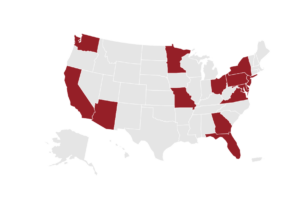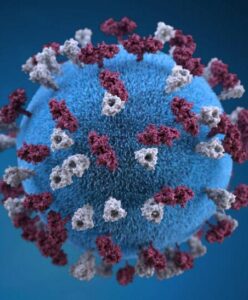Current Measles Outbreak
Current Measles Outbreak
The following states Arizona, California, Georgia, Maryland, Minnesota, Missouri, New Jersey, New York City, Ohio, Pennsylvania, and Virginia are now also reporting cases of measles, a highly contagious virus that primarily affects children. Measles also known as Rubeola, can cause serious medical problems in one out of five cases. The current measles outbreak, while not serious, points out concerns due measles to side effects.

Current Measles outbreak map per CDC
Measles (Rubeola) Side Effects
- Hospitalization. About 1 in 5 unvaccinated people in the U.S. who get measles is hospitalized.
- Pneumonia. As many as 1 out of every 20 children with measles gets pneumonia. Thus, the most common cause of death from measles in young children.
- Encephalitis. About 1 child out of every 1,000 who get measles will develop encephalitis (swelling of the brain). Encephalitis can lead to convulsions and can leave a child deaf or with intellectual disability.
- Death. Nearly 1 to 3 of every 1,000 children who become infected with measles will die from respiratory and neurologic complications.
- Complications during pregnancy. Measles may cause pregnant women who have not had the MMR vaccine to give birth prematurely, or have a low-birth-weight baby.
About Measles
Measles a preventable illness was once common. Measles was eradicated in the U.S. thanks to the widespread use of vaccines. Most current cases originating outside of the country and are spread via unvaccinated people.

3D graphical representation of a spherical-shaped, measles virus particle that is studded with glycoprotein tubercles. Source: CDC/PHIL
Measles/Rubeola Vaccine development
In 1954, John F. Enders and Dr. Thomas C. Peebles collected blood samples from several ill students during a measles outbreak in Boston, Massachusetts. They wanted to isolate the measles virus in the student’s blood and create a measles vaccine. They succeeded in isolating measles in 13-year-old David Edmonston’s blood.
In 1963, John Enders and colleagues transformed their Edmonston-B strain of measles virus into a vaccine and licensed it in the United States. In 1968, saw an improved measles vaccine. This vaccine was developed by Maurice Hilleman and colleagues. Thus this improved vaccines was distributed then. This vaccine, called the Edmonston-Enders (formerly “Moraten”) strain has been the only measles vaccine used in the United States since 1968. The newer Measles vaccine normally has vaccines for mumps and rubella (MMR) with it. A later development combined several vaccines with mumps, rubella and varicella called the (MMRV) vaccine. Follow this link to learn more about measles vaccines.
Current CDC Warning
Currently, the Centers for Disease Control and Prevention (CDC) issued an emergency warning on Jan. 25. The public needs to remain vigilant in the cities with large airports. Thus far 23 cases tested positive for measles. The case count remains low, but reports of new infections have continued to pop up in states across the U.S., with some tied directly to international travelers. These states have major international airports.
History of Measles
The last major outbreak of measles in the U.S. happened back in 2019, when a total of 1,249 measles cases. This post summarizes the current outbreak and measles vaccine development.